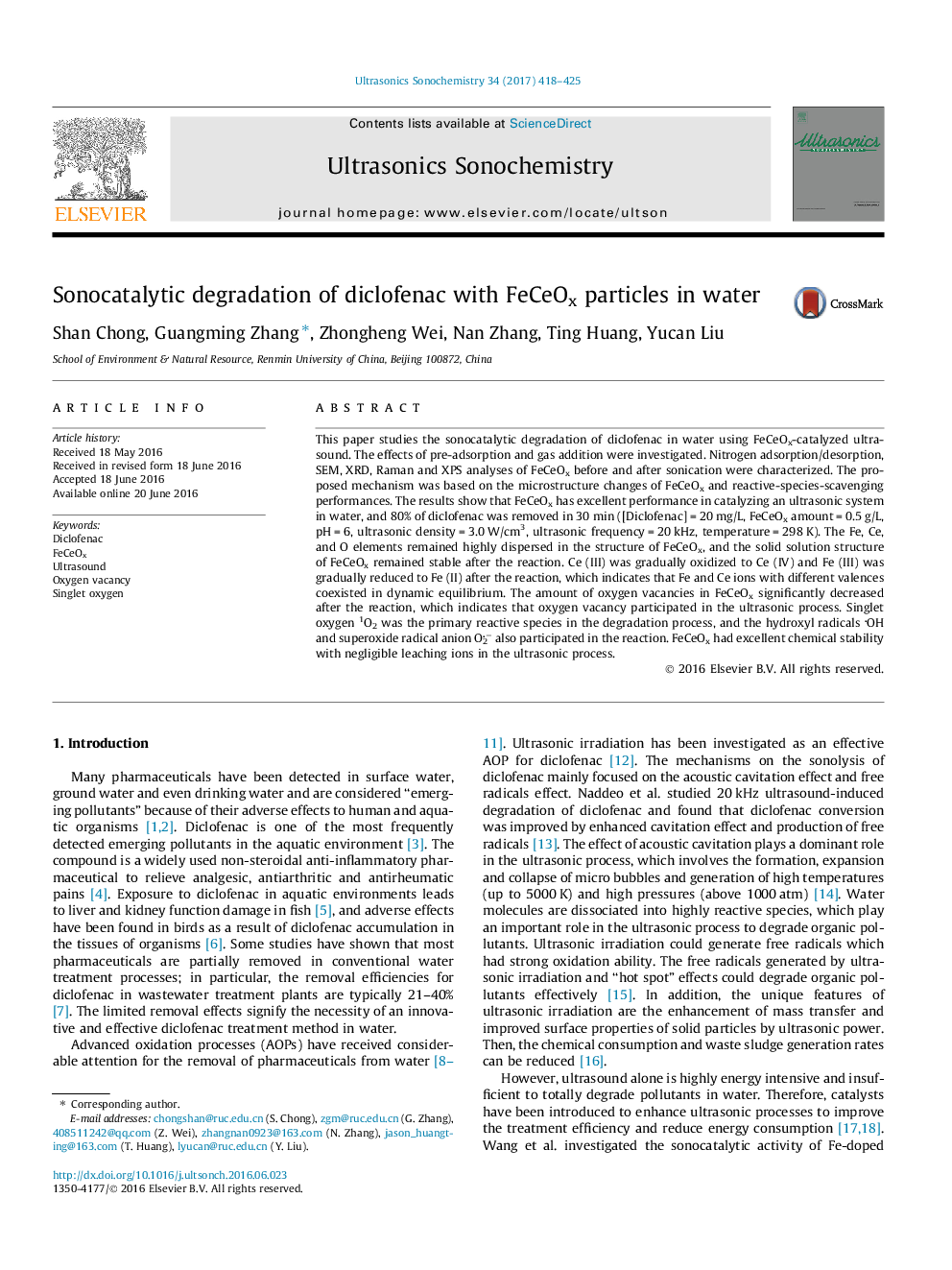| کد مقاله | کد نشریه | سال انتشار | مقاله انگلیسی | نسخه تمام متن |
|---|---|---|---|---|
| 7703695 | 1496870 | 2017 | 8 صفحه PDF | دانلود رایگان |
عنوان انگلیسی مقاله ISI
Sonocatalytic degradation of diclofenac with FeCeOx particles in water
دانلود مقاله + سفارش ترجمه
دانلود مقاله ISI انگلیسی
رایگان برای ایرانیان
کلمات کلیدی
موضوعات مرتبط
مهندسی و علوم پایه
شیمی
شیمی (عمومی)
پیش نمایش صفحه اول مقاله

چکیده انگلیسی
This paper studies the sonocatalytic degradation of diclofenac in water using FeCeOx-catalyzed ultrasound. The effects of pre-adsorption and gas addition were investigated. Nitrogen adsorption/desorption, SEM, XRD, Raman and XPS analyses of FeCeOx before and after sonication were characterized. The proposed mechanism was based on the microstructure changes of FeCeOx and reactive-species-scavenging performances. The results show that FeCeOx has excellent performance in catalyzing an ultrasonic system in water, and 80% of diclofenac was removed in 30 min ([Diclofenac] = 20 mg/L, FeCeOx amount = 0.5 g/L, pH = 6, ultrasonic density = 3.0 W/cm3, ultrasonic frequency = 20 kHz, temperature = 298 K). The Fe, Ce, and O elements remained highly dispersed in the structure of FeCeOx, and the solid solution structure of FeCeOx remained stable after the reaction. Ce (III) was gradually oxidized to Ce (IV) and Fe (III) was gradually reduced to Fe (II) after the reaction, which indicates that Fe and Ce ions with different valences coexisted in dynamic equilibrium. The amount of oxygen vacancies in FeCeOx significantly decreased after the reaction, which indicates that oxygen vacancy participated in the ultrasonic process. Singlet oxygen 1O2 was the primary reactive species in the degradation process, and the hydroxyl radicals OH and superoxide radical anion O2â also participated in the reaction. FeCeOx had excellent chemical stability with negligible leaching ions in the ultrasonic process.
ناشر
Database: Elsevier - ScienceDirect (ساینس دایرکت)
Journal: Ultrasonics Sonochemistry - Volume 34, January 2017, Pages 418-425
Journal: Ultrasonics Sonochemistry - Volume 34, January 2017, Pages 418-425
نویسندگان
Shan Chong, Guangming Zhang, Zhongheng Wei, Nan Zhang, Ting Huang, Yucan Liu,